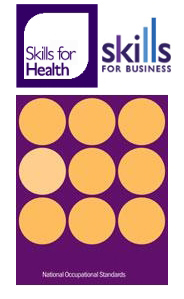Phlebotomy Training, In a period of mechanical headway, Phlebotomy remains a manual strategy, requiring basic choices and human aptitudes that will never be computerised. The able phlebotomist perceives and averts pre-systematic factors that may present mistake, satisfying a fundamental part in the research canter’s quality-administration framework. Since different collaborations and specific information are required, the phlebotomist significantly impacts persistent care, quiet relations, and the exactness and effectiveness of the research canter’s way of work process. Offices taking a stab at brilliance in these zones should start by inspecting the esteem they put on the phlebotomist's part in the work environment. All things considered, that is the place quality accumulations start.
The most possibly deadly pre-systematic blunder is ill-advised patient distinguishing proof. This is essential however bears saying. Inability to legitimately recognise patients can lead them to be dealt with, analysed, cured, and oversaw by another patient's well being status.
As indicated by the Clinical and Laboratory Standards Institute (CLSI, some time ago NCCLS) an inpatient ought to be requested to express patient's full name, date of birth, address as well as National Health Service Number. These provided information must be compared with the information on the identification bracelet, which must be joined to the patient, and the test demand or PC produced marks. All errors must be accounted for to the suitable parental figure as per office arrangement and settled before accumulation.
Imagine a scenario in which the patients can't identify themselves because of language barriers or the patient’s state of consciousness, dialect hindrances or the patient's condition of awareness. The NHS standards requires a caregiver or family member to provide the information on the patient’s behalf before drawing the blood or taking the specimen. This necessity is advocated to some extent by thinks about that appear to 16% of distinguishing proof arm ornaments contain incorrect data. Archiving the name of the verifier is great hazard administration. .
Crisis room patients ought to be labelled with a type of recognisable proof regardless of whether it is just a brief number. The accompanying things are not worthy substitutes for a distinguishing proof such as bracelet on the wrist:
Wall Charts;
Water Jugs;
Labels on the Bedside; and
Distinguishing proof wrist trinkets not appended to the patient.
There is not a viable alternative for either having a hard identifier joined to the patient, having the patient talk their names, or having a guardian confirm the patient's identification.
For outpatients, CLSI prescribes having the patient express their names address, birth date, as well as one of a kind distinguishing proof number and contrasting that data and the order or structures the patient conveys to the draw station. Neither inpatients nor outpatients ought to be requested to insist their name as in "Are you Jane Doe?" Patients who might be nearly deaf may misconstrue and react "yes" just to be courteous. A smarter arrangement is to request that the patient disclose to you their name.






